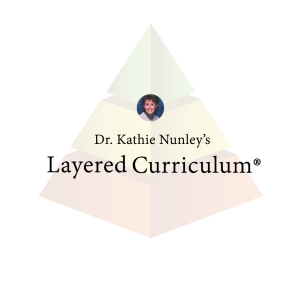Despite the perceived obstacles, differentiation at the high school level is not difficult. Many of us have the mental model that differentiation belongs at the elementary level, with learning stations filled with colorful blocks and tiny chairs. But, break out of that mental perception and see how to differentiate your high school classroom, despite the logistical issues, complex curricula and high-stakes tests.
Step One: Define your learning objectives and then OFFER ASSIGNMENT CHOICES for each one. Many of us have been teaching for so long that we haven’t really stopped to think about individual learning objectives in a teaching unit. We know the topics we’re covering and the way in which we design our lessons and student projects, but have forgotten what the individual learning objectives are. So begin by listing those and then come up with at least two different assignment choices that might lead to that learning.
Step Two: Offer LECTURES as OPTIONAL. Get rid of the notion of whole-class lectures. These do not fit the learning style of many of our students, set us up for attention and control battles and eat away at valuable class time. So offer your short lecture as an option and either put it in the middle of the class period, or record it and upload it for students to watch and listen at a computer station or on their tablets during class or at home.
Step Three: Provide WRITTEN STUDENT LESSON PLANS for student-centered classrooms. Classrooms should be run so that students come in and get started on their learning immediately. A student-started classroom is preferred over a teacher-started one. I always suggest to teachers that if you are going to lecture, put it in the middle of the class period, rather than the beginning. Students come in, get their assignment plans out and get to work without any instructions from the teacher.
Step Four: Provide a VARIETY OF LEARNING ENVIRONMENTS. Seated areas, reading areas, standing desk areas, lab areas, small group work areas – these are all possibilities for the room. Take your cues here from a kindergarten room, but blow it up to fit adolescents. The physical environment should make it clear that this is a student-centered classroom.
Step Five: Play the role of ACTIVE FACILITATOR and COACH. You, as the teacher are the facilitator in this room and should be on the move constantly. Check with students as to their learning, their plan and their progress. Avoid the temptation to sit at a desk while students work. Keep structure and deadlines tight. Make sure that something is due each day. Students need a schedule for completing the unit in the assigned time.
Going Further: Convert to a complete Layered Curriculum(R) classroom by adding Accountability and more complex learning tied to grading.
Suggested Reading: Differentiating Your High School Classroom: Overcoming the obstacles.



